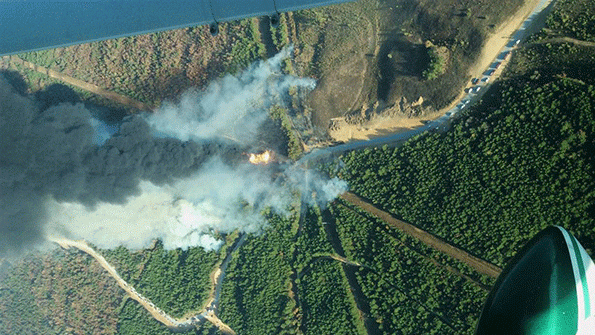
November 2, 2016
One Worker Dead, Five Injured When the Colonial Pipeline in Rural Alabama Explodes


November 2, 2016

Fires are still burning at the site of a gasoline pipeline explosion in Alabama on Oct. 31. A crew of contractors from L. E. Bell Construction was working on the Colonial Pipeline line in Shelby County around 3 p.m. when their equipment struck the line, causing the explosion. One worker was killed and five others were injured, four with serious burns.
In a statement released Oct. 31, Colonial Pipeline said the contractors, who were hired to drain the line, “experienced an incident when the trackhoe it was using hit the line. Gasoline was ignited and caused a fire, which continues to burn.” The company has shut down the two tandem lines – one gasoline and one diesel – that traverse the area.
“Our deepest condolences go out tonight to the family and friends of the person who was lost today, and our thoughts and prayers are with those who were injured,” the company said.
Homes and businesses within three miles of the explosion were evacuated, according to the office of Alabama Gov. Robert Bentley. The explosion occurred about a mile from a September gasoline leak that shut the line down for 12 days.
On Sept. 9, a state mining inspector in Shelby County, Ala., detected a gasoline odor at a surface mine and alerted Colonial Pipeline, which operates two pipelines in the immediate vicinity. Colonial Pipeline initiated a shutdown of both lines, known as Line 1 and 2, and mobilized a coordinated response effort with federal, state and local agencies as well as local emergency responders. Later that day, it was confirmed that the released product was gasoline and Line 2, which transports diesel, jet fuel and other refined products, was placed back into service.
Environmental controls immediately were deployed at the release site, including on a tributary (Peel Creek) to the Cahaba River and at the mouth of the tributary and the Cahaba River. The release volume was estimated to be 7,370 barrels.
Working EPA, the Alabama Department of Environmental Management (ADEM) and the Cahaba Riverkeeper, Colonial Pipeline began water quality sampling began on Sept. 9 and will continue throughout the remediation process and periodically thereafter in consultation with ADEM. In order to maintain safe working conditions, an air monitoring plan also was put into place during the active response.
On Sept. 21, Colonial Pipeline completed construction of a temporary bypass around the leak site to allow Line 1 to return to service. This plan was reviewed by the U.S. Department of Transportation (PHMSA) and EPA.
In coordination with PHMSA, on Sept. 29, Colonial Pipeline identified the release location following excavation of the pipe. On Oct. 1, Colonial Pipeline removed the impacted segment of pipe and sent it to an independent laboratory for analysis.
In a statement released earlier this month, Colonial Pipeline noted its system currently was operating at normal capacity, adding, “Between late October and mid-November, Colonial will be performing system integrity work to remove the temporary bypass in Alabama and restore Line 1 to service.”
This article retrieved from EHSToday.com